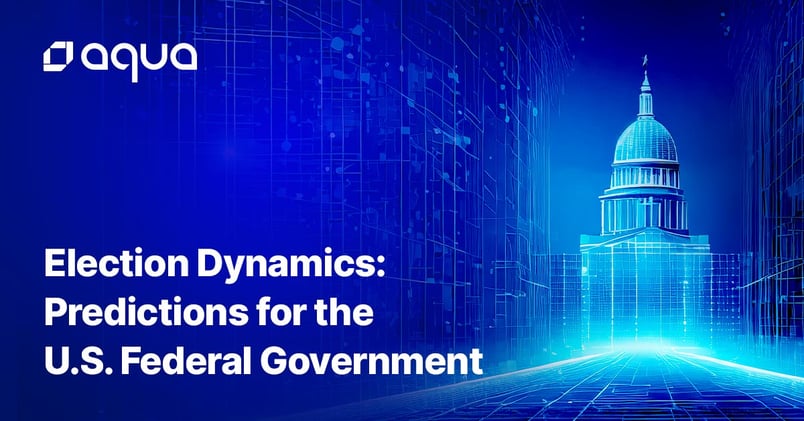As we approach 2024, the U.S. Federal Government stands at a critical juncture in cybersecurity. With the backdrop of an election year, emerging technological trends, and evolving cyber threats, it’s essential to anticipate the challenges and opportunities that lie ahead. Drawing from insights of recent expert analyses and industry trends, here are what we feel will be the key cybersecurity predictions for the U.S. Federal Government next year.
Operational and Asset Intelligence Emphasis
With elections on the horizon, the federal government will intensify efforts in operational and asset intelligence cybersecurity. This involves thoroughly monitoring and protecting all network-connected assets, ensuring their integrity and security. Such measures are crucial in maintaining public trust in the electoral process and safeguarding against cyber threats that can undermine U.S. democracy.
The Dual Role of AI in Cybersecurity
Artificial Intelligence will play a dual role in cyber defense and offense. On the one hand, AI's advanced analytics and predictive capabilities will empower federal agencies to detect and respond to threats more effectively. On the other hand, there's a growing concern about AI being used by adversaries for sophisticated attacks, including the creation of deepfakes. Agencies must balance AI’s benefits with the need to protect against its misuse.
AI-Powered Cyber Exposure Management
The use of AI in cyber exposure management will also become increasingly important. AI’s ability to analyze large datasets and identify patterns will be vital in managing the ever-expanding attack surface of federal networks. This includes real-time monitoring and response to potential threats, ensuring that cybersecurity measures are both proactive and adaptive.
Addressing Nation-State Threats to Critical Infrastructure
The threat from nation-state actors will be a top concern, particularly targeting critical infrastructure. These adversaries are increasingly capable of launching debilitating attacks that can disrupt essential services. The government's response will involve enhanced surveillance, improved threat intelligence, and robust incident response protocols.
Evolving Supply Chain Security
In the domain of supply chain security, the focus will be on consolidating existing cybersecurity programs for more effective management. This consolidation aims to create a unified defense strategy against supply chain vulnerabilities. Aqua Security can play a pivotal role here by providing comprehensive container security solutions. By ensuring the integrity of containerized applications, Aqua Security can help protect against vulnerabilities that might arise in complex software supply chains.
Zero Trust Security Model: Comprehensive Adoption
The Zero Trust model, which involves strict verification of all users and devices within a network, will see broader implementation across federal agencies. This approach ensures that only authenticated and authorized individuals and devices can access network resources, thereby significantly reducing the attack surface.
Enhancing Public-Private Partnerships and Policy Development
The coming year will likely witness the strengthening of public-private partnerships in cybersecurity. These collaborations will be instrumental in sharing threat intelligence and best practices. Additionally, new policies and guidelines around the use of AI in cybersecurity are expected to be developed, providing a framework for both offensive and defensive cyber operations.
Modernizing Cybersecurity Procurement and Talent Acquisition
Efforts will be made to streamline the procurement process for cybersecurity solutions, allowing for quicker and more efficient adoption of new technologies. Concurrently, addressing the cybersecurity workforce shortage remains a priority. Initiatives to attract and retain skilled professionals, including competitive compensation, career development opportunities, and work-life balance, will be key.
Increased Cybersecurity Budgets
Recognizing the heightened cyber threat landscape, there will be an increased allocation of funds towards cybersecurity initiatives. This budgetary expansion is expected to support various aspects of cyber defense, including deploying advanced security technologies, training programs for cybersecurity personnel, and developing more resilient cybersecurity infrastructures.
Dynamic Forward-Thinking for 2024
The U.S. Federal Government's approach to cybersecurity in the coming year will need to be dynamic, multi-faceted, and forward-thinking. The integration of AI in cyber defense, strengthening of critical infrastructure security, enhancement of supply chain security with solutions like Aqua Security, adoption of the Zero Trust model, and the formation of robust public-private partnerships will be key components of this strategy. With increased budgets and a focus on talent acquisition, the federal government aims to stay ahead of evolving cyber threats and safeguard national security.

